The muZEEum is part of the Dutch Canon
Since March 2019 Zeeland’s maritime MuZEEm has been part of the Canon network group. The group is a network of Dutch musea and heritage sites which together tell the fifty windows of the Canon of the Netherlands (www.canonvannederland.nl). Presently the Dutch Canon consists of three windows which are told by Zeeland’s maritime muZEEum; Michiel de Ruyter, the VOC and slavery.
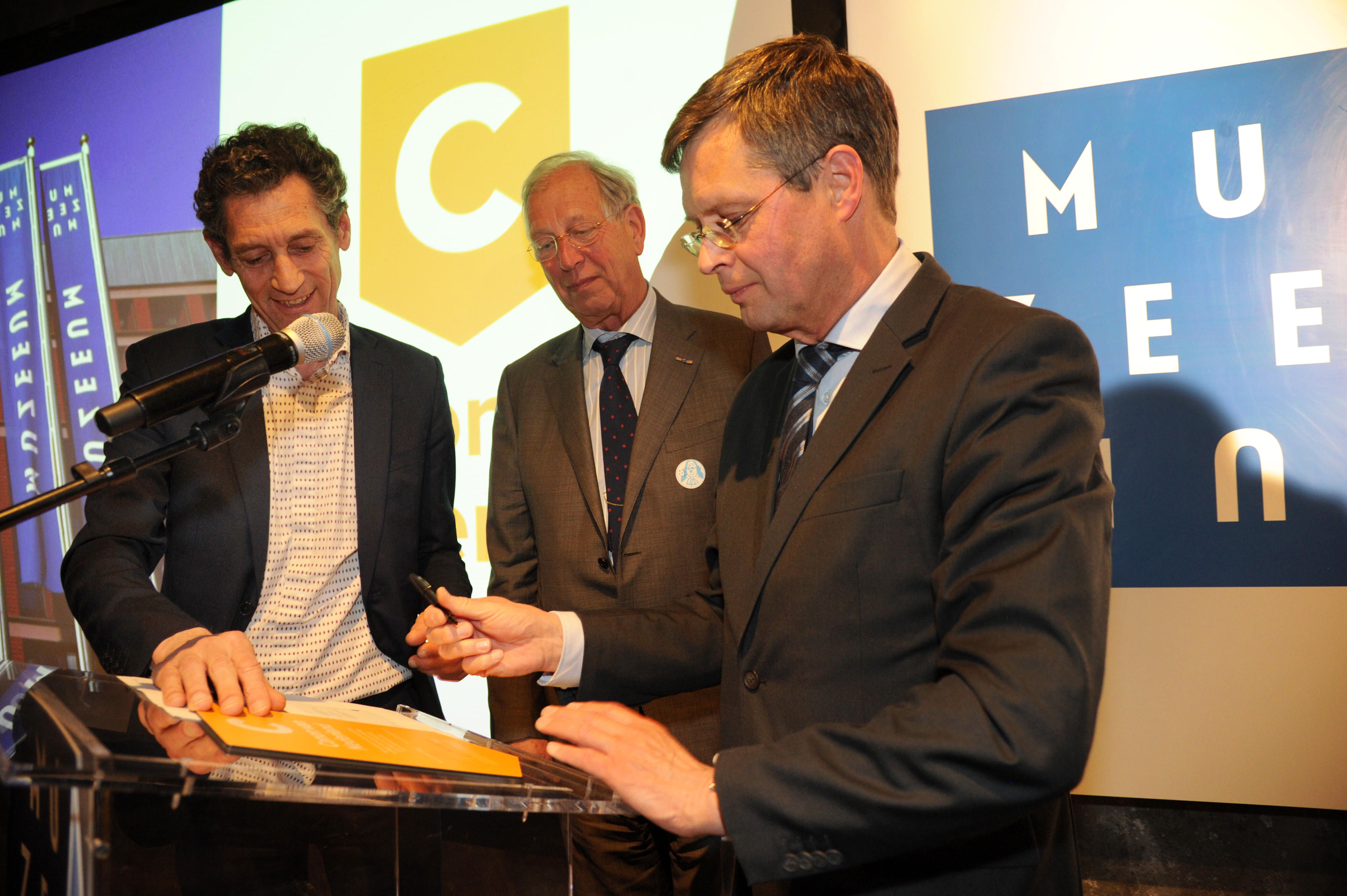
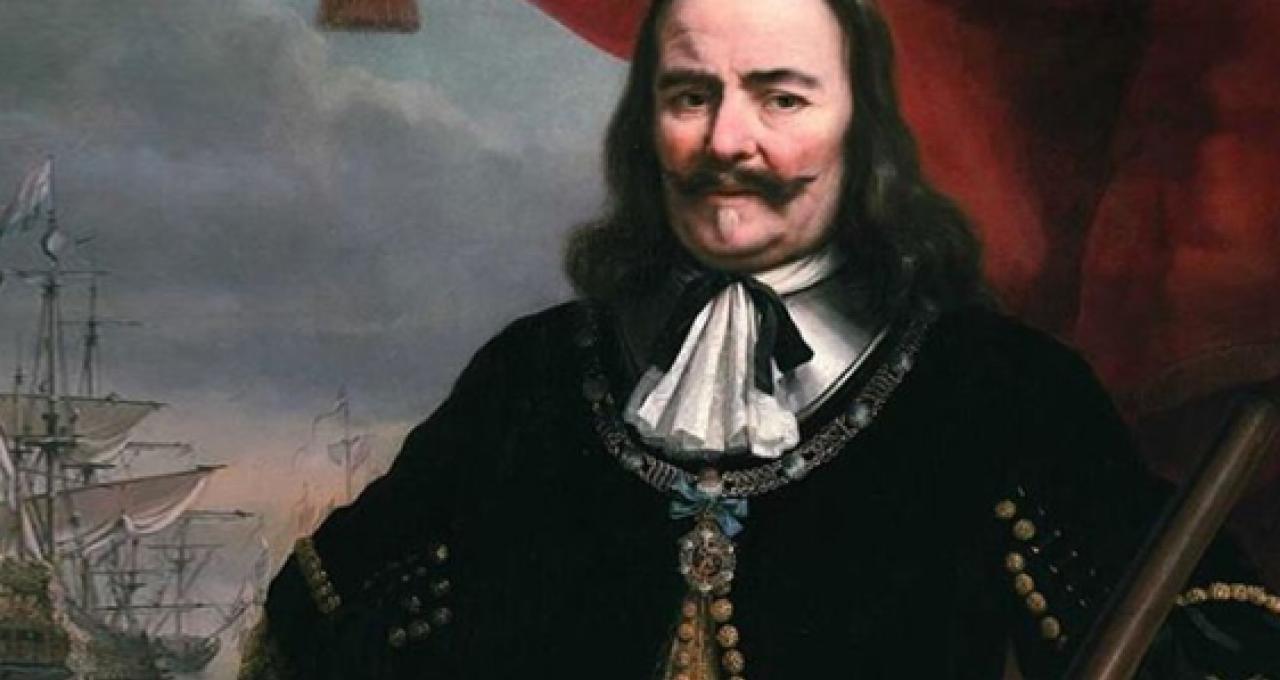
Michiel de Ruyter: our most acclaimed hero of the sea
In the Golden Age Michiel Adriaenszoon de Ruyter was considered saviour of the nation. His role in naval battles determined the fate of the Republic of the Seven United Netherlands. Bestevaer is his nick-name: best father – as he is good for his crew. De Ruyter is the son of a sailor, later beer-carrier. In his time it is special if you make career from simple rascal from Vlissingen to admiral.
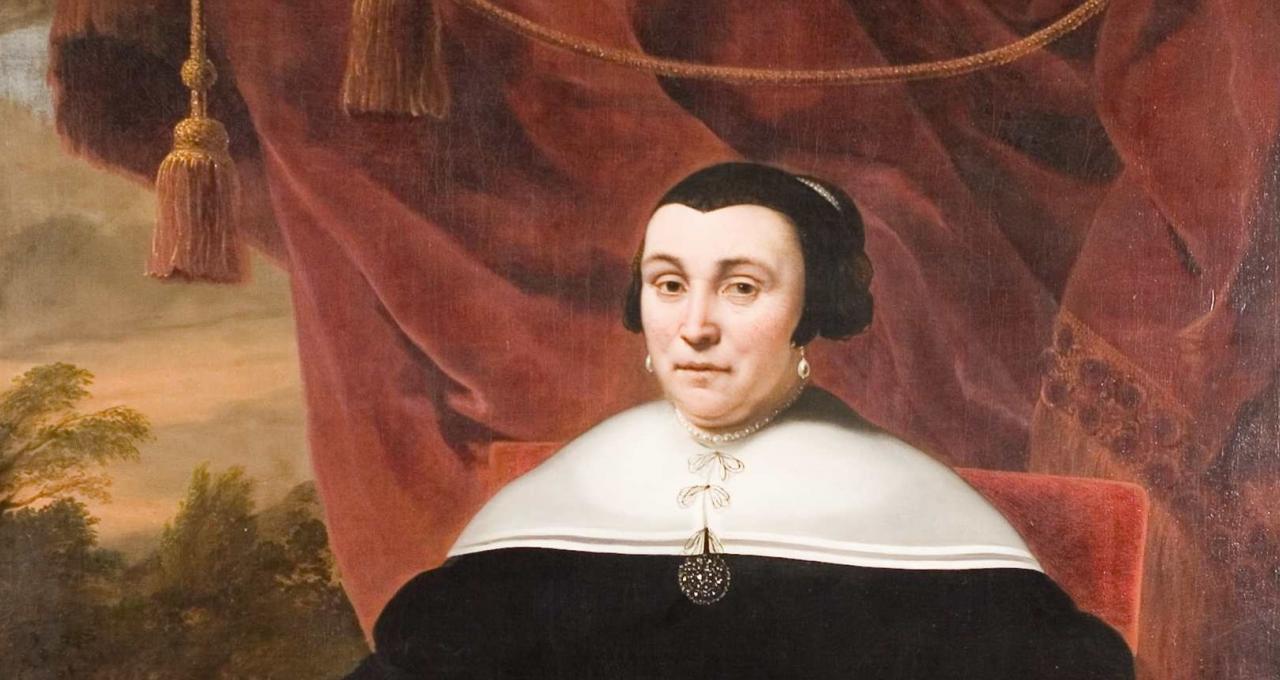
Anna van Gelder: business woman from Vlissingen
In 1652 Michiel de Ruyter married Anna van Gelder from Vlissingen; she became his third wife. They loved each other dearly. He wrote her extensive letters when at sea. She would accompany him on important visits, such as to Johan de Witt, the council pensionary. Van Gelder was a business woman. She managed all financial matters of De Ruyter ashore, took care of the ship’s provisions and paid the seamen’s wives.

The wheel of Michiel
The story goes that Michiel de Ruyter was dispelled from school as a rebellious boy. He wanted to sail, so he joined the service of the rich Vlissingen ship owner Cornelis Lampsins. As a poor boy he had to start at the bottom: at the ropery, as a rope-maker’s apprentice. When Michiel was eleven, his deepest wish came true, he was to go to sea as a cabin boy.
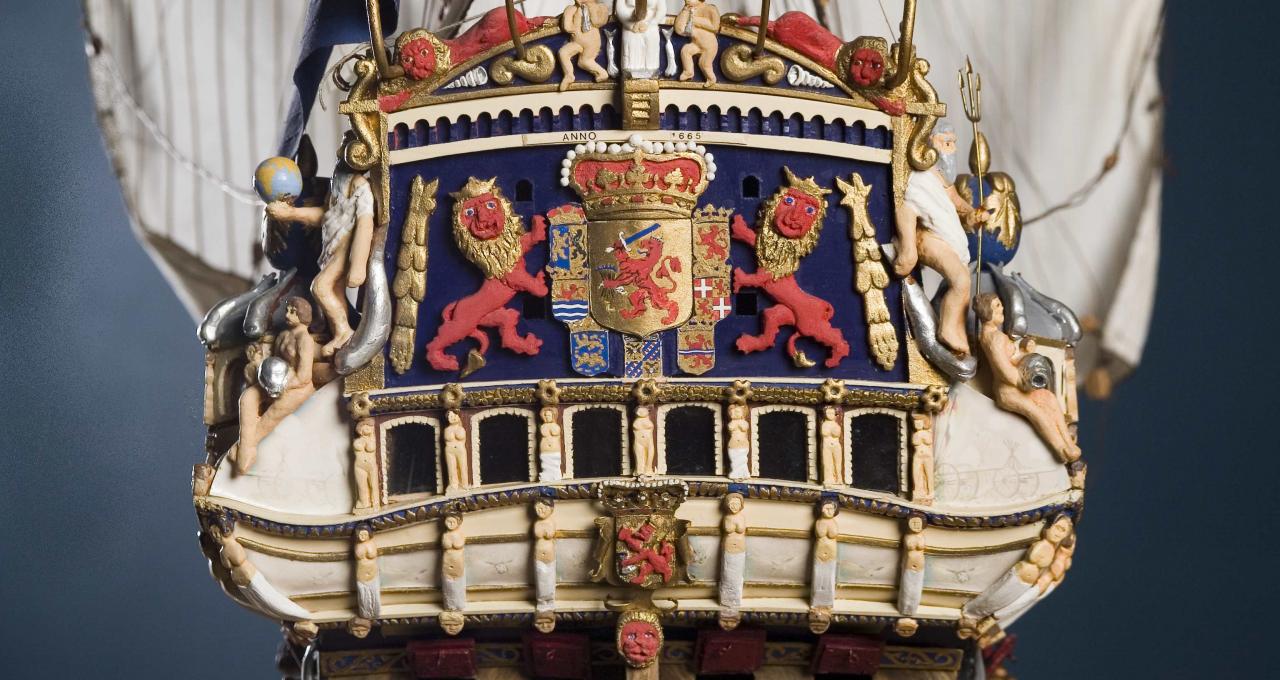
Flagship The Seven Provinces
The Seven Provinces is the most well-known warship of the Golden Age. It played a major role in many naval battles, such as the Voyage to Chatham. In the seventeenth century the Republic of the Seven United Netherlands and England waged wars about trade and sea routes. During the naval battle near Chatham 1667 the Dutch ships broke through the heavy chain at the bottom of the sea and beat the enemy. This led to the Peace of Breda. English ships were taken home as spoils.
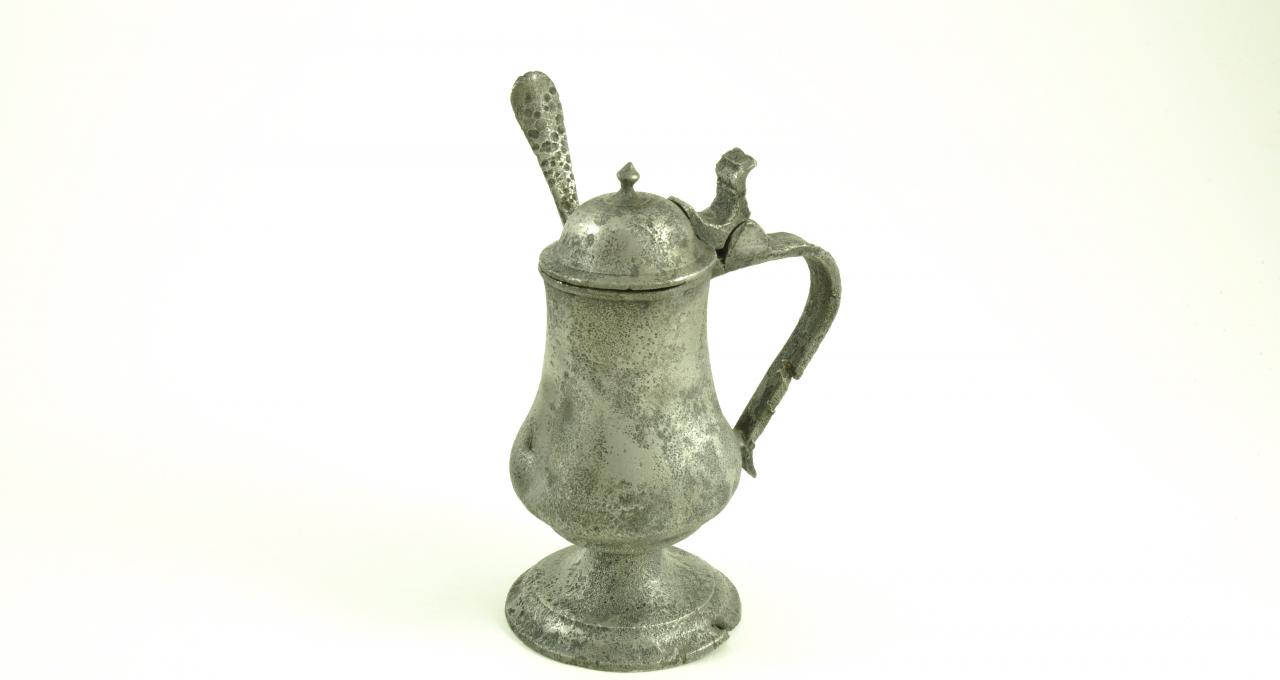
Life on the VOC ship Rooswijk
For more than 250 years the objects lay at the bottom of the sea. It is a miracle that they were preserved the way they were. The mustard pot was found with the spoon still in it, glasses were complete with a set of lenses. These luxury objects were possessions of the officers of the ship. Underwater archaeology teaches us much about life on board during the lengthy voyages.
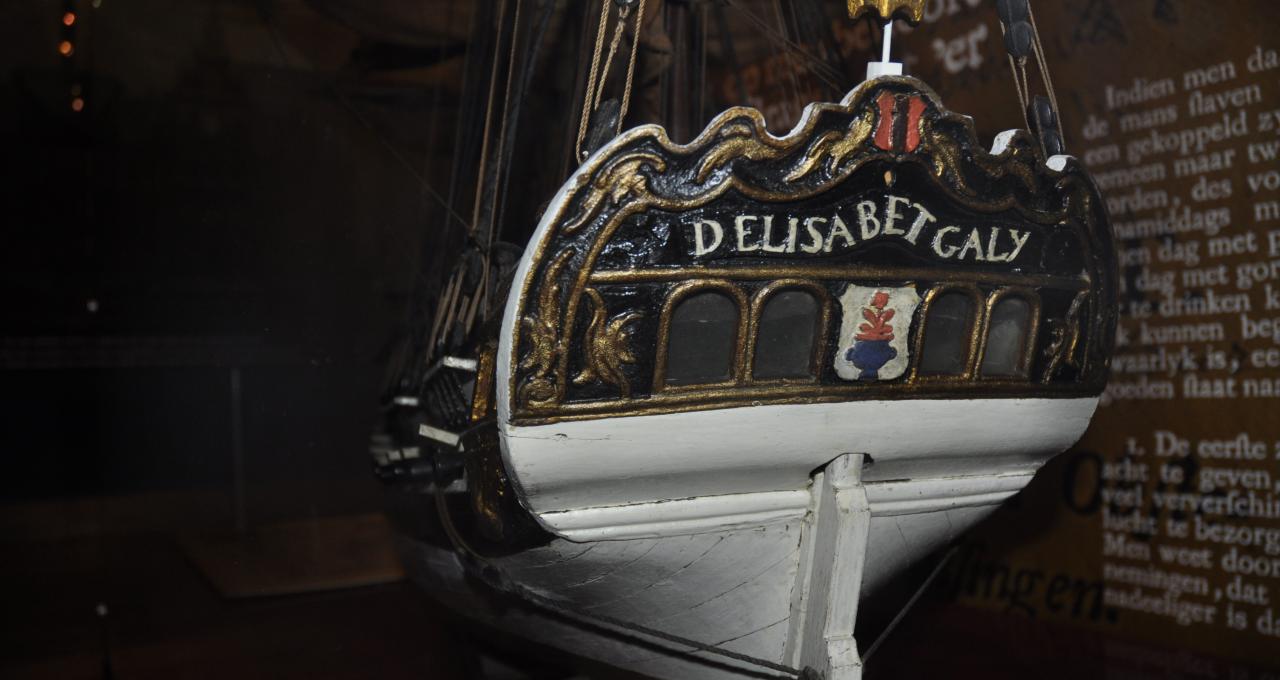
A slave ship from Zeeland: D’Elisabeith Galy
From the eighteenth century onwards Zeeland played a large role in slave trade. From the harbours of Middelburg and Vlissingen ships, which resemble the model D’Elisabeth Galy from 1762, set sail. They travelled to West Africa to buy people. The enslaved persons were taken to America and sold there. They had to work on plantations for their new owners. The ships returned to Europe with trade goods.
